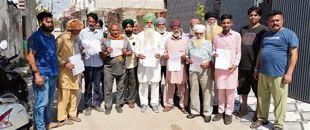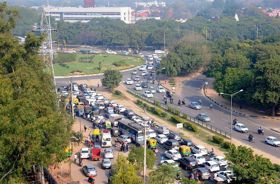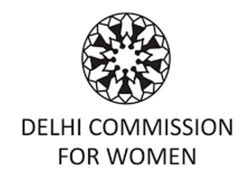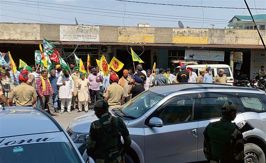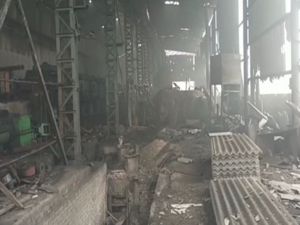
Jathedar Gopal Singh Qaumi,
Statues help us revisit the history and keep the past alive. Situated in the middle of the bustling city are the statues of intellectual giants of an era gone by. Standing tall across the streets, parks and mohallas, these statues, commemorative plaques and busts rekindle memories of these warriors and reflect past.
Jathedar Gopal Singh Qaumi
He was an active member of the Gurdwara Reform Movement. A Ghadarite, he later became the president of the Shiromani Akali Dal. Gopal Singh Qaumi’s epitaph on his statue near the Skylark Chowk reads: Gopal Singh Qaumi remained in confinement during the Freedom Struggle for 13 years in the Lahore Fort, Mainwali, Multan and Sialkot jails. He took an active part in the Simon Commission Boycott, ‘Quit India Movement’, Guru Ka Bagh Morcha and went on a 64-day hunger strike in jail. He was awarded Tamra Patra by the Government of India on August 15, 1975.
 Bhagat Singh
Bhagat Singh
Bhagat Singh is one of the most popular and revered freedom movement icons till date. His name recently surfaced again during the farmers’ protests. Located at the city bus stand, the statue of this towering figure is dressed in bronze. It was inaugurated by former CM Parkash Singh Badal on October 24, 2007. Bhagat Singh remains the most popular political icons celebrated by the masses till date. Khatkar Kalan, his ancestral village, remains a potential centre of politics.
 Swami Vivekanand
Swami Vivekanand
Born in 1863, the towering spiritual Guru became the bridge that took the Vedanta philosophy to the West. A disciple of Ramkrishna Paramhansa, a thorough intellectual, his address and presence at the Chicago Parliament of Religions in 1893 (when he had gone to represent Hinduism) won him great recognition. His Jalandhar statue established by the Bharat Vikas Parishad, with the cooperation of the Municipal Corporation was inaugurated on April 18, 2010, by the then Local Bodies Minister Manoranjan Kalia and Mayor Rakesh Rathour.
 Beant Singh
Beant Singh
Beant Singh’s statue has been installed at the BMC Chowk. Ex-Chief Minister of Punjab, he was born on February 19, 1923, in Bilaspur district of Ludhiana. He graduated from Government College, Lahore. He won as an independent candidate to Punjab Vidhan Sabha in 1971, from Payal Constituency. He also served as the PPCC president and was the Chief Minister of Punjab from 1992 up to his death. He had to pay a heavy price for wiping out terrorism from the state. His epitaph goes as, Mar ke bhi na niklegi mere dil se vatan ki ulfat; Meri mitti se khushboo-e-vatan ayegi.
 Udham Singh
Udham Singh
A Ghadarite revolutionary, Udham Singh was among the legendary freedom movement icons of Punjab, who, like Bhagat Singh, commands great respect among the youth. He shot dead Lieutenant Governor of the Punjab, Sir Michael O ’Dwyer on March 13, 1940, to avenge the Jallianwala Bagh Massacre. His statue lies at the Udham Singh Nagar near Doordarshan and was inaugurated by the then Mayor.
 Capt Roopendra Singh Garcha
Capt Roopendra Singh Garcha
Capt Roopendra Singh Garcha is another valiant son of Jalandhar, who lost his life during a combat with insurgents. Capt Roopender Singh Garcha was born on October 29, 1974, in Jalandhar. He did his schooling from Kendriya Vidyalaya-II, Jalandhar Cantt, and graduated in computer sciences from Lyallpur Khalsa College, Jalandhar, in 1995. He was commissioned into the Indian Army on September 5, 1997. On June 30, 2000, he was assigned the task of neutralising militants in the Ghat Tokum village in Pulwama district. He sustained fatal injuries in an encounter with militants, thus attaining martyrdom.
 Lal Bahadur Shastri
Lal Bahadur Shastri
A white-stoned statue of Lal Bahadur Shastri, the second Prime Minister of India, and a seasoned politician, is located at the bustling Shastri Chowk. His bust was inaugurated by former President Giani Zail Singh, the then CM of Punjab, on May 22, 1976. He gave the slogan of “Jai Jawan Jai Kisan.” He was a man of integrity and competence.
 Mahatma Gandhi
Mahatma Gandhi
Born as Mohandas Karamchand Gandhi, he was the man whose non-violent resistance against the British eventually sounded a death knell for the colonial empire of the British in India. Teaching the path of non-violence (ahimsa) to the world, his style of protest is still deemed to be the most effective for the civil rights activists raising their voice against atrocities across the world. Gandhi also visited the Harivallabh Sangeet Sameelan in Jalandhar in 1919. His white statue, is quite synonymous to peace and harmony that he advocated throughout his life.
 Major Raman Dada
Major Raman Dada
Major Raman Dada of the 11th Battalion, Sikh Regiment, on the night of May 12, 1999, led a raid on an NDFB hideout in thick jungles and mountainous terrain of the upper Diring near Assam-Arunachal Pradesh border. Major Raman’s party reached the hideout. Two of the militants who had opened fire were shot dead by him. Thereafter, an encounter began lasting for an hour. He attacked another militant and killed him. In the due process, he was also critically injured. Bleeding profusely, he refused to be evacuated and shot dead another fleeing militant before succumbing to his injuries.
 Dr BR Ambedkar
Dr BR Ambedkar
An architect of the Indian Constitution, a staunch critic of caste discrimination, Dr BR Ambedkar’s message remains embedded in the ethos of Jalandhar. Ambedkar came to Jalandhar addressing several congregations in 1951. His conversion to Buddhism also led a wave of Buddhist conversions in the region, a tradition still observed by many families. He is also a reverberating symbol of the contemporary Dalit consciousness and protest discourse in the region.
Pt Kishori Lal
The statue of veteran freedom fighter Pt Kishori Lal was inaugurated by Chaudhary Jagjit Singh, the then Minister for Local Bodies on May 22, 2005. Pt Kishori Lal, was an associate of Bhagat Singh and a member of the revolutionary Hindustan Socialist Republican Association (HSRA). He joined the Naujawan Bharat Sabha in 1928 and was a part of the HSRA bomb making unit (at 69 Kashmir Building, Lahore). Courting arrest, while in jail, he was part of a hunger strike with the HSRA members and served an 18-year jail sentence across Lahore, Multan and Montgomery jails. Eventually influenced by the Marxist ideology in jail, he went on to join the Communist Party in 1942 and was elected Punjab President of the All-India Trade Congress Union (AITCU) in 1948 and was a committee member of the CPI (M) in Punjab for many years. An active member of the Desh Bhagat Yadgar Committee, he died on July 11, 1990, following a road accident.
Join Whatsapp Channel of The Tribune for latest updates.





















